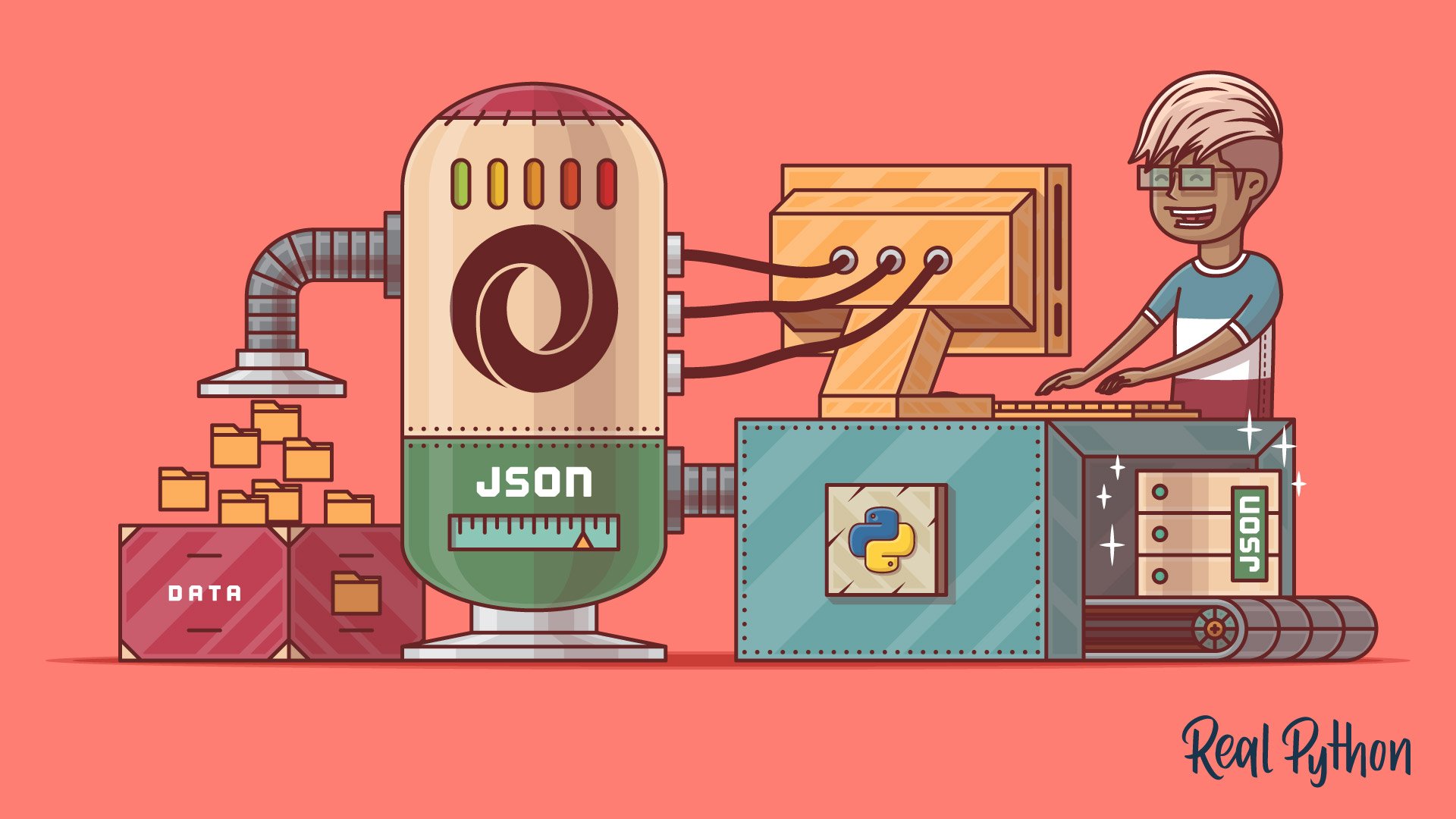json
The Python json module provides tools to encode and decode data in JavaScript Object Notation (JSON), a lightweight data interchange format that’s easy for humans to read and write and easy for machines to parse and generate.
Here’s a quick example:
>>> import json
>>> # Convert a Python dictionary to a JSON string
>>> json.dumps({"name": "Alice", "age": 30})
'{"name": "Alice", "age": 30}'
Key Features
Frequently Used Classes and Functions
| Object | Type | Description |
|---|---|---|
json.dump() |
Function | Serializes a Python object to a JSON-formatted stream |
json.dumps() |
Function | Serializes Python objects to a JSON-formatted string |
json.load() |
Function | Deserializes a JSON-formatted stream to a Python object |
json.loads() |
Function | Deserializes a JSON-formatted string to a Python object |
json.JSONEncoder |
Class | Provides a custom encoder for JSON serialization |
json.JSONDecoder |
Class | Provides a custom decoder for JSON deserialization |
Examples
Serializing a Python dictionary to a JSON string:
>>> import json
>>> data = {"name": "Bob", "age": 25}
>>> json_str = json.dumps(data)
>>> json_str
'{"name": "Bob", "age": 25}'
Deserializing a JSON string to a Python dictionary:
>>> json.loads('{"name": "Bob", "age": 25}')
{'name': 'Bob', 'age': 25}
Serializing with pretty printing:
>>> print(json.dumps(data, indent=2))
{
"name": "Bob",
"age": 25
}
Common Use Cases
- Storing and exchanging data between a web server and a client
- Configuring applications with JSON files
- Logging structured data in a human-readable format
Real-World Example
You can use the json module to read configuration data from a JSON file and update it programmatically. Here’s an example of updating a user’s profile information stored in a JSON file:
>>> import json
>>> import pathlib
>>> config_file = pathlib.Path("user_config.json")
>>> # Read the existing configuration
>>> with config_file.open(mode="r", encoding="utf-8") as file:
... config = json.load(file)
...
>>> # Update user profile information
>>> config["user"]["name"] = "Charlie"
>>> config["user"]["preferences"]["theme"] = "dark"
>>> # Write the updated configuration back to the file
>>> with config_file.open(mode="w", encoding="utf-8") as file:
... json.dump(config, file, indent=4)
...
>>> # Verify the file update
>>> with config_file.open("r") as file:
... updated_config = json.load(file)
...
>>> updated_config["user"]["name"]
'Charlie'
This example demonstrates how you can use the json module to read, modify, and write JSON data to a file, facilitating tasks such as application configuration management.
Related Resources
Tutorial
Working With JSON Data in Python
Learn how to work with JSON data in Python using the json module. Convert, read, write, and validate JSON files and handle JSON data for APIs and storage.
For additional information on related topics, take a look at the following resources:
- Working With JSON in Python (Course)
- Working With JSON Data in Python (Quiz)
By Leodanis Pozo Ramos • Updated July 15, 2025

